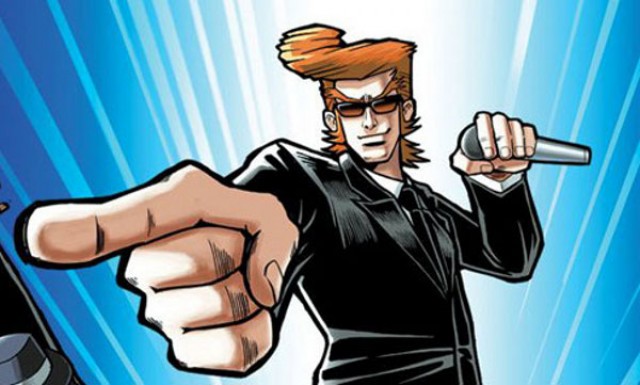
Video game music today is an integral ingredient in the recipe for an amazing game. As the game industry as a whole has now surpassed the movie industry in terms of global worth, a musical score for the next A-list game is arguably more important than that of a score for the next Hollywood blockbuster. Take the Zelda theme, for instance– a simple piece of music that has followed the Zelda series for almost 30 years and, for me, is as iconic to gaming as the Superman theme is to the movie industry.
Now that technology has advanced somewhat since the original Zelda, the music industry has since realized the potential of using real bands and their tracks within games in order to further promote their artists. This has resulted in games that use music not merely as an accompaniment, but as the foundation upon which the entire game is built, and where music is the object of the game.
These types of game commonly fall under a broad genre of music games, the most common of which is the rhythm-based action game. At their peak in 2008, these games were the most popular form of game genre at the time. This was short lived, however, and the rhythm-based action game soon dropped in popularity due to the countless spin-offs saturating the market. With this in mind, I wanted to look at some of the best and worst offerings on Nintendo’s systems and take a look at what lies ahead for this troubled genre.
Dance Dance Revolution
There was a time when you would walk into an arcade somewhere and you could guarantee there would be two people standing on Konami’s Dance Dance Revolution machine, doing some kind of synchronized aerobics to some very loud, very fast, Euro hard-house music. What they were actually doing was trying to keep in time to said music by stepping (or dancing, as they would have you believe) on corresponding arrows that were floating up the screen at varying speeds. The music used mainly featured tracks by Konami’s in-house artists and were made specifically for the game; however, later incarnations and sequels did have licensed music
DDR was released in Japan in 1998 and North America and Europe in 1999. It’s considered one of the pioneering titles that brought about the popularity of the rhythm-based dancing game and was released on pretty much any console that could run it, providing you also purchased the plastic mat peripheral. This included Game Boy Color, which came with a tiny version of the DDR touch sensitive mat that fixed directly to the front of the handheld. Unfortunately, you weren’t allowed to step on it and were advised to just use your fingers!
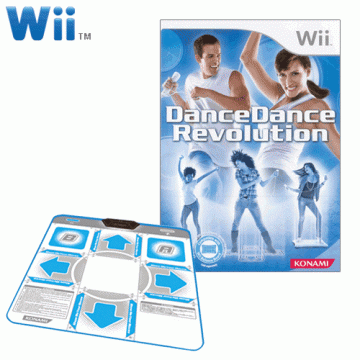
Samba De Amigo
It was eight years until Sonic Team’s Samba De Amigo was re-released by Gearbox Software on Wii, after its original Dreamcast outing back in 2000. This again was another rhythm based game that used the Wii Remote and Nunchuk to resemble maracas that were used by Amigo, the manic sombrero-wearing monkey, to play along to the music.
The game itself upon it initial release was a triumph and received a wealth of positive reviews. The Wii release, although generally good, suffered small inconsistencies with Wii’s motion controller, which frustrated some and in turn resulted in some mediocre reviews.
The beauty of this game for me is that Sonic Team produced a music game that primarily uses popular Latin music songs rather than just rehashing a load of mainstream pop songs with a samba twist. Granted, some of the tracks are like this– Chumbawamba’s “Tubthumping” is a particular highlight, albeit for the wrong reasons. My point being, however, is that a game like this can potentially give a lot of exposure to Latino music from people who would never normally listen to it… and those who hate Chumbawamba!
Donkey Konga
This has got to be one of the best peripherals ever to be included with a game: a set of working bongo drums! Released in 2003 and developed by Namco, this rhythm-based action game followed Donkey and Diddy Kong as they practice to become better bongo players in order to buy as many bananas as they want.
Okay, so the plot isn’t the greatest, but it didn’t matter. You got to bash and clap on a set of bongo drums to your heart’s content. In typical Nintendo style, the game was accessible to anyone of any age that could basically bang on the drum in time with the music. Due to its popularity, two sequels were produced; however, sadly the third instalment was only ever released in Japan. Again, many of the songs used included tracks by well-known artists such as Blink-182, Queen, the B-52s, and even Mozart. What most of us probably did, though, was to head straight to the extended version of the excellent Pokémon theme and bongo like a boss!
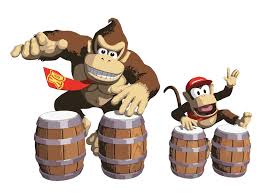
Elite Beat Agents
Nintendo DS wasn’t short of music and rhythm-based games. In fact, the DS touch screen was perfect for such titles and produced arguably some of the best examples of the genre to grace any system. One title that stands shoulder to shoulder with the best of them is Elite Beat Agents. The game is the spiritual successor to the Japanese rhythm game Osu! Tatakae! Ouendan! and was developed by Inis specifically for Western audiences.
The game shares many of the same common elements from Ouendan, tapping and dragging specific areas of the touch screen in time to the rhythm of the music. What’s unique is that whilst doing your various hand acrobatics a comic strip style narrative plays out on the top screen, the outcome of which is determined by how well you play.
Much like its Japanese counterpart, Agents’ track list, whilst impressive, are all cover versions of popular US and UK artists. While this may be a let-down for some, the cover versions are actually not that bad and stay faithful to the originals. You’ll find it hard not to hum along to cover versions of the likes of Steriograms “Walkie Talkie Man,” whilst happily tapping away at the DS in time.
Agents was well received when released in North America in 2006. It received critical acclaim, won countless awards including DS game of the year, and was also released under Nintendo’s Touch! Generations label in order to appeal to people outside of the traditional gaming community. Unfortunately, sales figures did not reflect this, selling around 120,000 copies in its first three weeks of release– less than half the expected number.
Rock Revolution
Here is an example of how to get it completely wrong. Rock Revolution was a multi format release from 2008, published by Konami and featured on both Nintendo’s Wii and DS consoles. It was intended to have a more drum-based focus than that of other band games at the time, and as such had its own drum kit peripheral. It was another standard rhythm based affair; however, for the Wii and DS versions, the drum kit was not required. The Wii version simply used air gestures through the Wii Remote and Nunchuk, while the DS version again used both the touchscreen for guitar and drum play and the DS’s internal microphone for vocals.
Considering the games heritage and its falling under Konami’s “Revolution” umbrella, you would think the game was a license to print money. Alas, upon its release, critics panned it, claiming that the game was simply an inferior version of Guitar Hero and Rock Band, with all but three songs that weren’t covers. Fortunately for anyone with either the DS or Wii versions, they were saved from the abomination that was the drum kit, which also received negative reviews for its cumbersome design and excessive number of pads.
Wii Music
Another of Nintendo’s Touch! Generations brand games, Wii Music was a slightly different take on the traditional music and rhythm-based game. Released in 2008, the game focused more so on the arrangement of songs by organizing varying members of a band made up by your Mii characters.
The different instruments used by each band member would have to be mimicked by the player using the Wii Remote and Nunchuk in order to create the music. The player was then encouraged to experiment with the music and with different ways a song can be played.
Unfortunately, Wii Music received mixed reviews, and for obvious reasons. It was far too simple, favouring a more “well done for trying” attitude to its gameplay due to the exclusion of any kind of scoring system based on player performance. However, its biggest complaint, ironically, was the music. This was made up predominantly of public domain songs, whereby any copyrights have either expired or were not applicable in the first place. This meant that you could play along to the likes of “Happy Birthday,” “Do-Re-Mi,” “Frere Jacques,” and any other classic that you last played in kindergarten.
Guitar Hero
The cultural phenomenon that is the rhythm-based music game had its elite titles during its peak, and Activision’s Guitar Hero series is possibly the biggest in the business. The series has spawned six further Guitar Hero games and a total of nine games under the Hero brand, including Band Hero and DJ Hero. According to Activision, the Guitar Hero franchise is the third largest gaming franchise in the world and is only surpassed by the likes of Mario and the Madden NFL series.
It’s not surprising, really; Guitar Hero seemed to get everything right as the series progressed, Guitar Hero 3: Legend of Rock being the standout title for most. Its well-designed guitar peripheral, particularly for Wii, faithfully recreated some of the most iconic guitars in the business, and was adapted to house the Wii Remote to enable wireless play. Even DS got a look in, with possibly one of the most ingenious accessories that enabled the handheld to essentially become a guitar, using the touchscreen as the frets. Put all this together with an abundance of licensed music in later titles covering four decades of music and you have all the ingredients to make anyone a rock god!
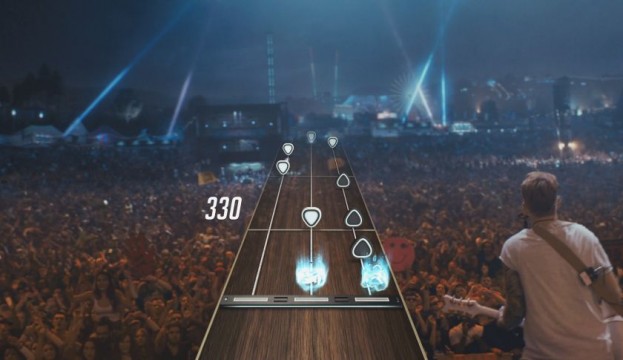
But what is to become of the music and rhythm-based game now? Was it just some one-trick pony that people have now become tired of or was it just the victim of its own success, releasing too much too soon? Well, it seems Activision has asked itself these very questions for the last five years and has now come up with the answers.
As we have already covered on our site, Guitar Hero Live is set to release later this year. Activision believes that there is a revival in sight for the music video game and, if managed correctly by learning from past mistakes, will potentially generate somewhere in the region $100 million globally. Given that Guitar Hero is such a massive brand, even after a long, five year sleep, analysts believe that Activision’s iconic game could potentially account for 75 percent of the market.
What do you think? Is the music game set for a comeback? Is it time to get the band back together? Let us know in your comments.




 ShareThis
ShareThis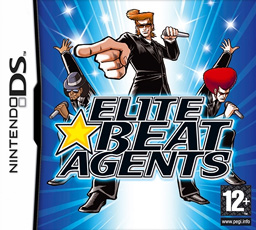








Was I the only person to actually like Wii Music? I mean, I guess I was a little young to know what made games mediocre, but I remember thoroughly enjoying the game nonetheless. Especially the drum kit. That thing was awesome.
Wii Music has sold over three million copies to date so you are certainly not the only one to like Wii Music excaliburguy. I think that the games unfortunate timing and having to compete with the likes of Guitar Hero and Rock Band at the time didn’t help in its popularity.
I never knew about the Game Boy Color DDR! *races to Wikipedia*